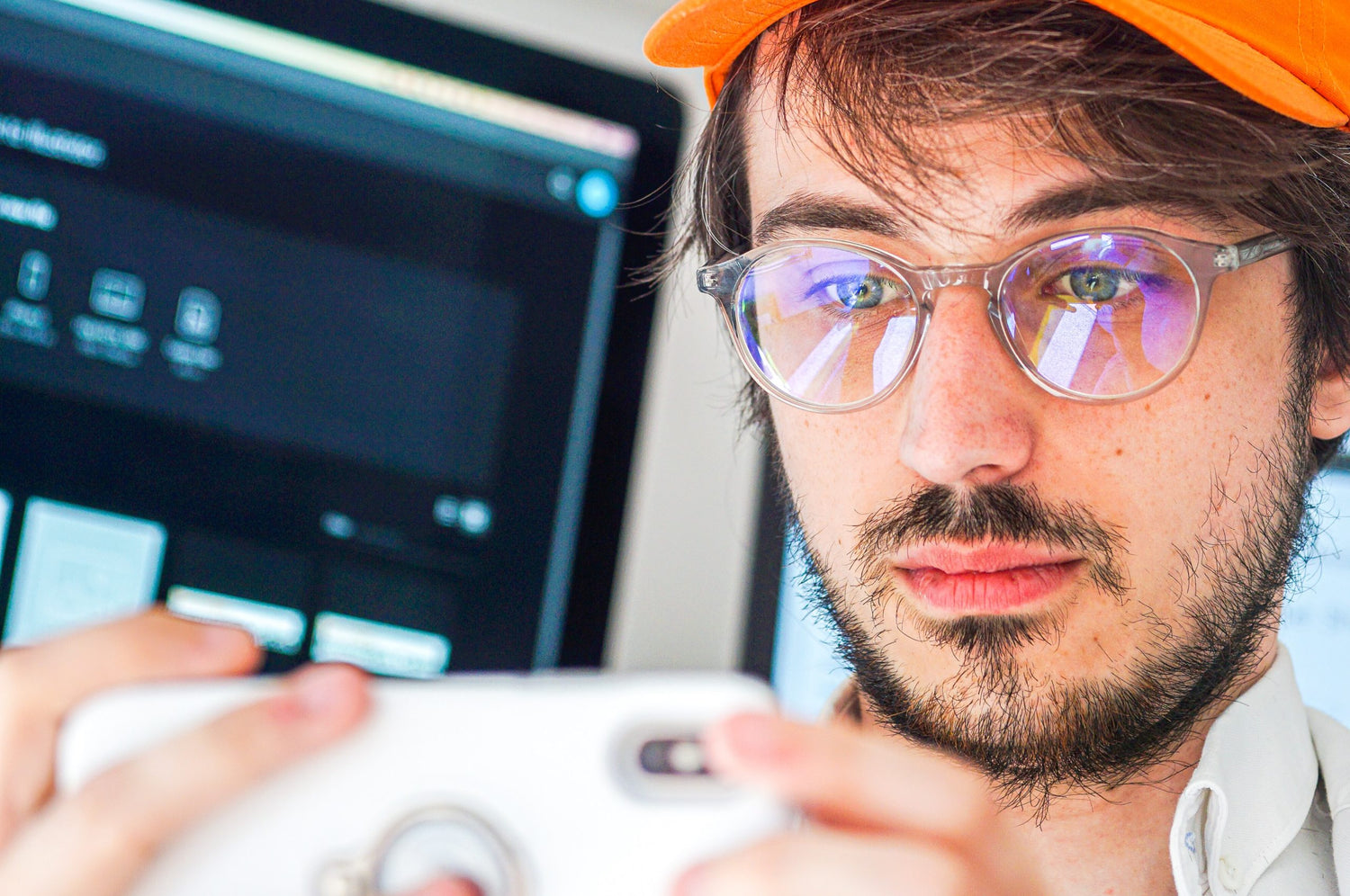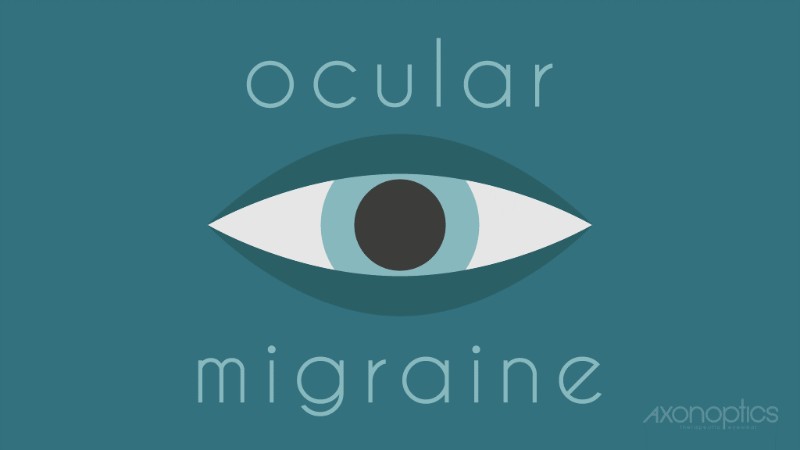If you’re light sensitive, you’re probably on the lookout for ways to protect yourself from excessively bright light or blue light. Nobody could blame you, since light sensitivity can cause symptoms like migraine headaches, dizziness, nausea, burning sensation, and pain.
In your search for relief, you might find tinted glasses, like blue blockers or FL-41. But there's a new lens on the market called the Avulux Migraine and Light Sensitivity lens.
In this article, we’ll compare FL-41 glasses, blue blocking glasses, and why Avulux glasses outperform them both. We're here to bring clarity to your questions around photophobia (a.k.a light sensitivity).
What Are FL-41 Glasses?
FL-41 glasses were developed in 1991. Sometimes called migraine glasses, they were designed to help people ward off symptoms of sensitivity to the flickering of fluorescent lights. Fluorescent lights put out a lot of blue light, which bothers a lot of people with photophobia. People who are light sensitive or get migraine headaches were using FL-41 glasses through the early 2010s to filter out blue light to help with their sensitivity to light.
FL-41 lenses have a rosy or red tint. Made properly and precisely, this tint blocks some of the aggravating blue light from entering your eyes. This is probably why a lot of people talk about FL-41 glasses vs blue blocking glasses interchangeably. However, as you’ll learn by reading this article, they are not the same thing.
What are Avulux Glasses?
You might have noticed that Avulux is a specific brand, whereas we refer to FL-41 and blue light lenses generically. The reason is that Avulux is a new, patented technology that was first released to the market in late 2018.
Avulux lenses use nanomolecular technology to precisely filter up to 97% of the most harmful migraine and photophobia triggering light. Avulux lenses precisely blocks blue, amber, and red light while allowing over 70% of soothing green light through.
Avulux lenses differ from both FL-41 glasses and blue blockers as it best aligns with the most recent science on light sensitivity. A 2016 Harvard study showed that blue, amber, red, and white light all increase migraine headache intensity, whereas green light could be soothing.
Both FL-41 and blue light glasses block varying levels of blue light. However, it's been proven that blue light isn't the only issue. Blocking more of the harmful light leads to better outcomes. Avulux lenses are the world's only clinically proven lenses for people living with migraine light sensitivity. Through a double-blind, randomized, placebo-controlled trial, people found that wearing Avulux glasses over placebo glasses was clinically and statistically significant in helping them live better with migraine by precisely filtering light.
Better yet, Avulux lenses typically block more blue light, in addition to amber and red light, than typical FL-41 or blue light blockers. Avulux is a step forward in lens technology for people living with light sensitivity.
Benefits of Avulux Glasses
Avulux lenses have benefits that are well-rooted in science.
- Avulux blocks up to 90% of blue/green (cyan) light, which peaks at 480 nanometers. Certain cells in the eye, called ipRGCs, are highly sensitive to this specific wavelength. It’s logical and proven that filtering this wavelength reduces light sensitivity.
- Avulux lenses additionally filter up to 97% of harmful amber light at 590 nanometers. Which was just as likely to increase migraine headache intensity in the 2016 Harvard trial.
- Wearing Avulux lenses shield your eyes from this harmful light. Light triggers up to 60% of migraine attacks and over 90% of people living with migraine experience light sensitivity.
Drawbacks of FL-41 Glasses (now solved by Avulux)
FL-41 glasses were a major breakthrough in treating light sensitivity, but we’ve learned a lot more about light sensitivity and its contributors since 1991.
FL-41 Doesn’t Block Amber Light
Over the last 30+ years, researchers have learned that blue light isn’t the only type of light that tends to bother photosensitive people, leading to symptoms including migraine headaches. They’ve figured out that both blue and amber light can aggravate photophobia. FL-41 glasses are designed to block the blue light, but not the amber light.
In short, you might get some relief from FL-41 glasses because they keep a good percentage of blue light from getting into your eyes. But you won’t get any relief from the offending amber light.
FL-41 Also Blocks Helpful Light
Through research, doctors and scientists (including Axon Optics’ founder, Dr. Bradley Katz) have discovered that other types of light are actually beneficial or soothing to people who are light sensitive.
Green light is known to actually reduce photophobia and headache severity. Unfortunately, FL-41 lenses block 80% of it (see the chart below). Along with filtering the offending light, doesn’t it make sense that lenses purported to help you with light sensitivity should also let in the soothing light?

FL-41 Glasses Are Inconsistent
There are a lot of companies that sell glasses labeled as FL-41. However, what you actually get when you buy glasses from these companies can vary significantly.
One study found major variations in lens color, quality, spectral characteristics, and optical densities between FL-41 lenses sold by different shops. See the images below for the data.
Each line of this graph represents an FL-41 lens from a different vendor. The lines show how much of various light wavelengths actually pass through the lens. You can see how big the differences are.

The graphic below illustrates the real-world differences in lens color among FL-41 vendors. These photos were all taken of the same model in the same lighting. See how they vary from purple, to rust-colored, to hot pink?

If FL-41 glasses are precisely made with the exact tint that blocks certain types of light, shouldn’t they all be the same? Clearly they’re clearly not. There is just no way to know exactly what you’re getting.
What Are Blue Blocking Glasses?
Blue light blocking glasses are frequently called blue blockers. They’re intended to reduce your discomfort by doing just what their name implies: blocking blue light.
Blue light comes from several sources, including LED and fluorescent lighting, and also from the sun. In this day and age, much of the blue light we’re exposed to comes from digital screens like computers, TVs, and smartphones.
You can buy blue light glasses from many traditional and online stores. When you get new glasses from your eye doctor, you might also be able to request a special coating that filters blue light.
Benefits of Blue Blocking Glasses
Some people swear that blue blockers help them avoid eye strain or improve their sleep. There could be some scientific evidence to support these claims.
- In 2017, a study followed 80 computer users for one month, providing them with blue blocking lenses. At the end of the study period, one-third of them felt like the glasses were helpful, reducing glare and improving their ability to see clearly.
- A limited study in 2019 studied healthy athletes who wore either blue blocking or transparent lenses for 3 hours before going to bed. Those who wore the blue blockers were able to get to sleep faster, but there was no total impact found on their wakefulness during the night.
- In 2020, a study had bipolar patients wear blue blockers for 3 hours before bed. These patients usually had trouble sleeping, but during the blue blocker study they experienced better sleep efficiency and less wakefulness after falling asleep.
Potential Drawbacks of Blue Blocking Glasses
While blue blocking glasses are purported by many to help ease eye strain, there are mixed reviews and research as well.
They May Not Help With Eye Strain
A study released in 2021 states that blue light lenses may have no effect on eye strain symptoms. This study involved 120 eye-strain-symptomatic participants. After participants completed a 2-hour computer task, there was no significant difference reported in eye strain symptoms between those who wore blue blockers and those who wore the placebo.
They Haven’t Been Shown to Reduce Migraine or Light Sensitivity
In spite of many studies, blue blocking glasses haven’t been shown to help with symptoms of migraine or light sensitivity. This could be because a lot of blue blockers don’t block much blue light when tested, nor do they block much amber light. See the chart below for details.

Lens spectrum measured on 08/02/21 on BPI Spectrometer.
You Don’t Know What You’re Getting
Like FL-41 lenses, blue light blockers are inconsistent among makers. They actually vary quite widely in how much blue light they block, as you can see from the chart above. Unless you own a spectrometer to test them yourself, there’s no way to know what you’ve really got.
Notice that Axon Optics glasses block the most blue and amber light by far.
As shown in the following graphic, blue blockers also vary in lens hue. Just looking at the different hues of these lenses should tell you a lot about the inconsistency of blue blockers.

They Reflect Glare Into Your Eyes
Many blue blocking lenses don’t come with any anti-reflective coatings. For people who are light sensitive, this is a problem because it could result in painful light being reflected right back at you.
The graphic below shows what a difference these coatings can make. Some blue blockers reflect as much as 8% of that blue light back into your eyes. Notice the difference between the blue blocking lenses and the pair from Axon Optics.

So while blue blockers may indeed be helpful to some, the science is mixed and the quality could be questionable. Blue blocking glasses aren’t made to help you with photophobia or migraine, so they can’t be relied on for that.
Summarizing the Difference Between FL-41 Glasses vs Blue Blocking Glasses vs Avulux Glasses
FL-41
FL-41 glasses only block blue light, and not the amber. To avoid discomfort, you need to block blue, amber, and red light.
Along with blocking blue, amber, and red light, you need to let in the soothing green light to get the best relief. Unfortunately, FL-41 lenses also block the green light.
The consistency between brands is also a big question mark, making it tough to know if you’re really getting what you’re paying for.
Blue Blockers
While many users say blue blockers help their eyes feel better when using a computer, or even help them sleep better, the research is mixed. Positive studies of blue blockers are generally small.
Unlike Avulux, blue blockers aren’t designed to help people with photophobia and migraine, and have never been shown to have that benefit.
And just like FL-41 glasses, the quality and effectiveness of blue blocking glasses vary widely from maker to maker.
The Axon Optics powered by Avulux Difference vs FL-41 and Blue Blockers
As stated above, for your best chance at combating light sensitivity and migraine, you need to block blue, amber, and red light, plus allow the soothing green light in. This is exactly what Axon Optics powered by Avulux Migraine Light Sensitivity lenses are engineered to do.
Our founder, neuro-ophthalmologist Dr. Bradley Katz has been hard at work since the 1990s to improve lens technology well above the blue blocking ability of the FL-41 tint, increasing its effectiveness for people with photophobia and light-triggered migraines.
Under his leadership, Axon Optics has joined the Avulux family to help people people live better with migraine and light sensitivity. Avulux lenses are the world's only lenses that are clinically proven to help people living with migraine light sensitivity.
- Wearing Avulux lenses prevents the most harmful light form entering your eyes. This lets you avoid the negative impact of light. We consider Avulux glasses a portable dark room.
- Axon Optics powered by Avulux block more harmful blue, amber, and red light than any FL-41 or blue light lenses.
- Axon Optics powered by Avulux lenses allow in over 70% of soothing green light.
- Every lens is the same, with consistent quality and effectiveness.
The Axon Optics team continues to do research to improve outcomes for people living with migraine and light sensitivity. If you’re on the fence about Avulux lenses, consider our glasses for migraine and light sensitivity. They block more of the bad light and let in more of the good — every pair, every time. You also have 60 days to try them. If they're not for you, simply send them back.






